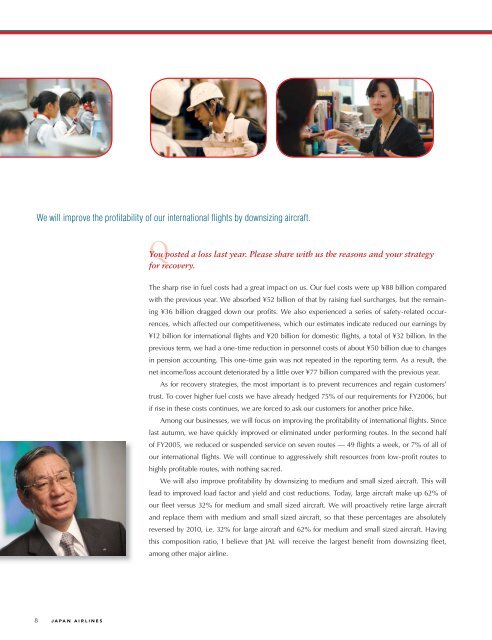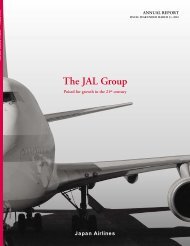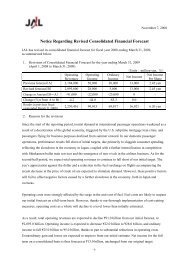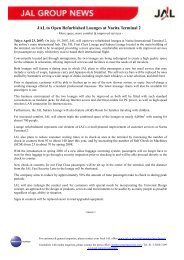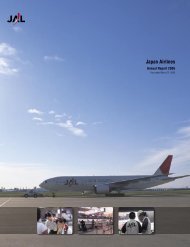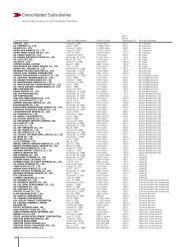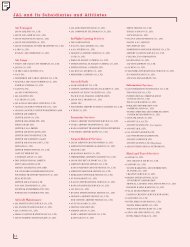Annual Report 2006 - JAL | JAPAN AIRLINES
Annual Report 2006 - JAL | JAPAN AIRLINES
Annual Report 2006 - JAL | JAPAN AIRLINES
- No tags were found...
Create successful ePaper yourself
Turn your PDF publications into a flip-book with our unique Google optimized e-Paper software.
We will improve the profi tability of our international fl ights by downsizing aircraft.QYou posted a loss last year. Please share with us the reasons and your strategyfor recovery.The sharp rise in fuel costs had a great impact on us. Our fuel costs were up ¥88 billion comparedwith the previous year. We absorbed ¥52 billion of that by raising fuel surcharges, but the remaining¥36 billion dragged down our profits. We also experienced a series of safety-related occurrences,which affected our competitiveness, which our estimates indicate reduced our earnings by¥12 billion for international flights and ¥20 billion for domestic flights, a total of ¥32 billion. In theprevious term, we had a one-time reduction in personnel costs of about ¥50 billion due to changesin pension accounting. This one-time gain was not repeated in the reporting term. As a result, thenet income/loss account deteriorated by a little over ¥77 billion compared with the previous year.As for recovery strategies, the most important is to prevent recurrences and regain customers’trust. To cover higher fuel costs we have already hedged 75% of our requirements for FY<strong>2006</strong>, butif rise in these costs continues, we are forced to ask our customers for another price hike.Among our businesses, we will focus on improving the profitability of international flights. Sincelast autumn, we have quickly improved or eliminated under performing routes. In the second halfof FY2005, we reduced or suspended service on seven routes — 49 flights a week, or 7% of all ofour international flights. We will continue to aggressively shift resources from low-profit routes tohighly profitable routes, with nothing sacred.We will also improve profitability by downsizing to medium and small sized aircraft. This willlead to improved load factor and yield and cost reductions. Today, large aircraft make up 62% ofour fleet versus 32% for medium and small sized aircraft. We will proactively retire large aircraftand replace them with medium and small sized aircraft, so that these percentages are absolutelyreversed by 2010, i.e. 32% for large aircraft and 62% for medium and small sized aircraft. Havingthis composition ratio, I believe that <strong>JAL</strong> will receive the largest benefit from downsizing fleet,among other major airline.8


